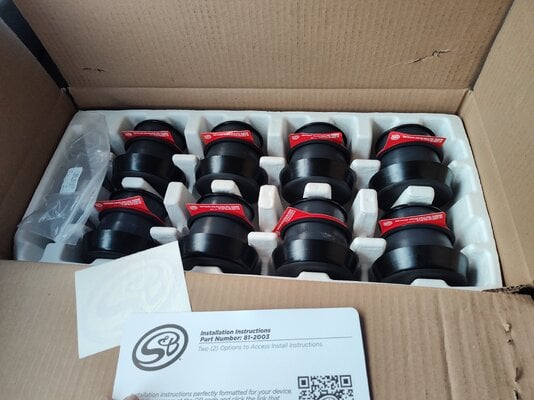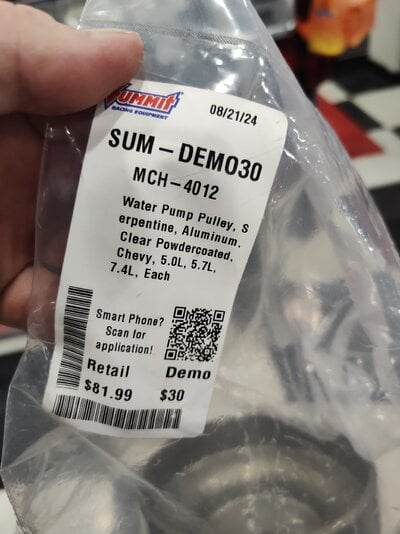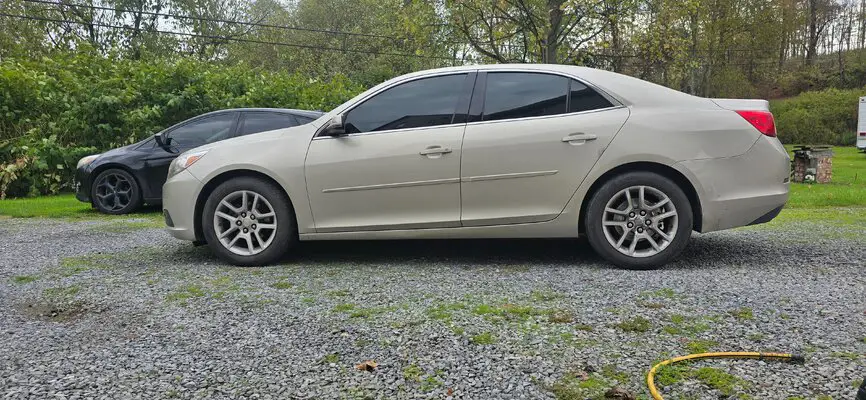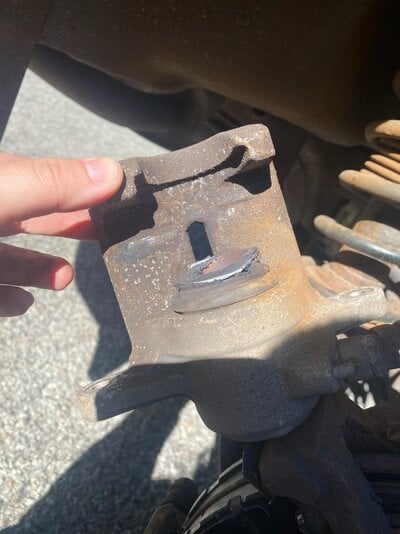As most of the lurkees around here can attest, I am not a one-project-at-a-time person; it's a common situation for many of us and I can think of a few hereabouts who have more projects on the go than fingers on a hand.
So I have what I call "In between" projects as, in between one major thing to do and another. There are smaller or easier sub projects or items to do or accomplish on the build list that get fitted into the schedule as needed or as time permits. Since I am on hold for the long weekend up here due to a no show in the body metal department, I elected to be productive by trying to advance a m/c floorboard project that I have been working on periodically.
View attachment 247332
View attachment 247333
Going to go about this slightly backwards, starting with the result and the application and working back to how I ended up with what I needed
What you see is a mounting block for a motorcycle foot peg that has been adapted for use on a mini-floorboard. To make the adaptation work, I had to fabricate custom length spacers to use on either side of the block to both center it and to make it fit snugly enough that there would be no pressure or tension imparted to the mounting ears on the floorboard itself.
View attachment 247334
For my raw material, I chose 5/8th steel shaft. The choice of OD was not random. The peg itself is 5/8ths square bar and it came that way from the manufacturer. Just recently I was able to score a second, brand new, pair of these pegs and might swap out the older ones for the nicer ones. Chroming for these is not an option at this point; too expensive when they can be bought already chromed and too hard, as I have noted elsewhere, to find a chromer that is still in business and can produce a quality product at a decent price. It is also, strictly speaking, not really necessary as to see these pegs you would pretty much have to be flat on your back and looking up. Only three ways that I know of to get that way, One, being that you are working on the bike, two, that you are curious and wanted a closer look, and three, that you decided to prove the all the allegations of your stupidity that have been circulating around and stepped off the curb when the light was red.
Once I had found that I, in fact, had the correct size of shaft in stock, (BIG SURPRISE!!!!!) it was time to get out the technology.
View attachment 247335
It definitely helps to have a lathe available for minor whittling jobs that come up from time to time. With the shaft locked into the lathe chuck, the first step was to face both ends of the shaft to get them flat and square to the outer surface of the shaft itself. Once that was accomplished, the next step was to machine a centre divot using a centering drill. They come in various dimensions and are just to create the machinist equivalent of a center punch mark in the exact center of the shaft so that any tool to be used that follows will track the mark instead of wandering away and wreaking havoc.
Once the live center was established, I then gun drilled the shaft, starting with an 11/64 pilot bit, and then moving up to a 1/4 inch finishing pass. The goal for the drilling was to reach a deep enough ID for the spacers that I could then just cut off blanks from the main piece and face/shave them down to the correct thickness. As it was, with two "test" pieces that consumed material along the way, I did have to revisit the drilling portion of the job and deepen the hole another inch. For that I just went with the final hole size bit as I had enough hole still present in the shaft that it would act as a guide to the bit so it wouldn't wander.
View attachment 247336
After all that high tech prep work, the next step was decidedly very low brow. Into the vice and wail on it with a hacksaw. In measuring out for the blanks, I had gone very generous on the basic rough thickness measurement, being fairly certain from past experience that the hacksaw would cut anything but straight and true. Which was pretty much what happened. No pictures of the actual face down to show; kind of was concentrating on getting the spacers to be faced flat while not taking too much at that point. The objective was to get to a starting point with each spacer and then carefully shave them down a few thou at a time to sneak up to the final thickness. That proved to be .361, +/_ .0005, or somewhere short of 3/8th inch and likely closer to 11/32". What that thickness gave me was a close to zero-zero fit that let me slip everything into place on the 1/4 inch crossbolt but left nothing for clearance or tolerance. Again, the goal for the spacers was to make them as thick as possible, as close to exactly alike as possible, and end up with them as tight as possible so the the floor board would articulate up/down on the peg but not flop or wobble, even with the cross bolt still loose. Hey, Me here being picky, picky, picky, based on need and necessity; Fuggedaboudit.
View attachment 247337
View attachment 247338
A couple of side by sides of what I started with and what/where I ended up with. That dimple in the end of the shaft stump is the bottom of the gun drilled hole. Although my estimate for allout depth of the hole in the shaft that I would have to drill was sketchy at best, by a combination of blind luck and pure happenstance it actually did prove to be enough at the end. As noted above, I did have to add a little more depth to the original estimate due to a couple of "test spacers" happening during the overall cut/machine process, yet I still came that close to being dead nuts for depth at the end. How close? Well, when I cut the last spacer blank and set it into the lathe chuck to face it, I thought that I might have to visit the hole in it jic. So I rehung the drill chuck and and bit assembly into the tail stock and slipped them into position only to discover that the bit slid through without issue. Go figure.
View attachment 247339
And the objective of all this labor and effort? What you see above. As the two .361's had already been slipped into position and the bolt hung to hold them and the peg, these are my stand ins for this shot; that's right, the two "test spacers" that I alluded to before. They disqualified themselve by being too short after being faced. The hacksaw cut to remove them from the shaft had walked too much away from square and finally cost me the correct width at the end by time I had them shaved down to flat and then went for the actual needed width. You can't actually tell for size but the one is .355 and the other is shorter still. .006 might not seem all that much but times two, due to needing two spacers, and it can be felt when you assemble the peg to its tabs. To get to tight on the nut would have put too much stress on those mounting ears that you can see in the first picture. So these will be set aside and binned against future need. Waste not; want not.
The next step for this project is to establish exactly where I want these floorboards to land on the new mounting strap. That, right now, is attached to the bike, and there it will remain as I will be fitting to it as it sits, rather than trying to fit it to the floor board away from the ride. Not complicated but some fuzzy thinking going on right now so...............................................As always, JUst me,
CopperNick

















